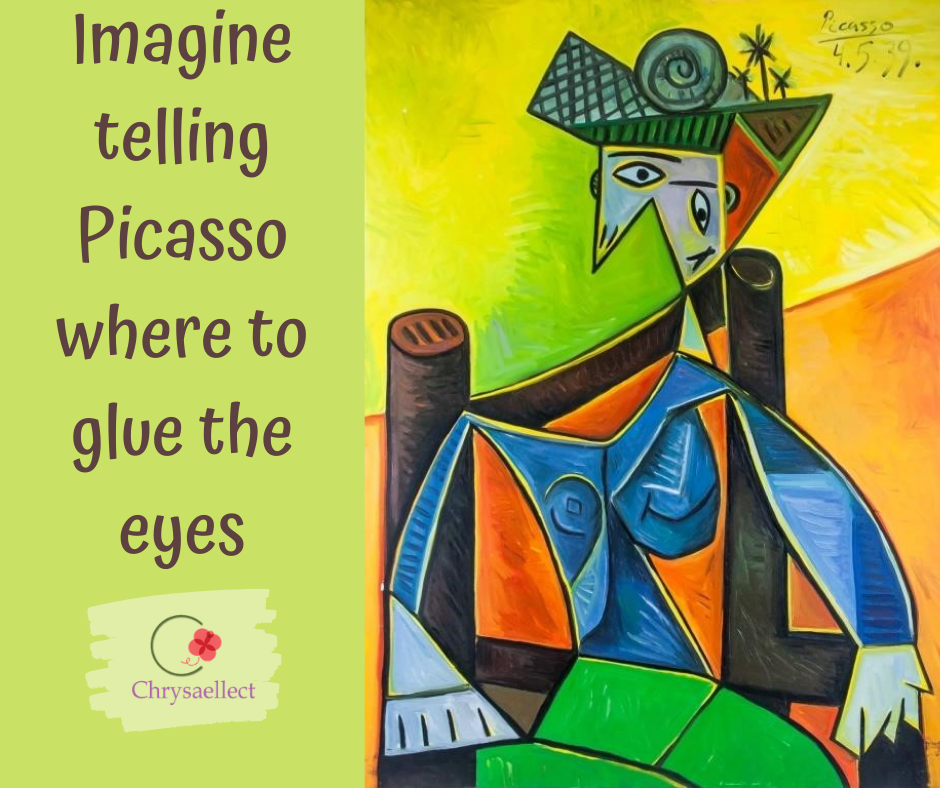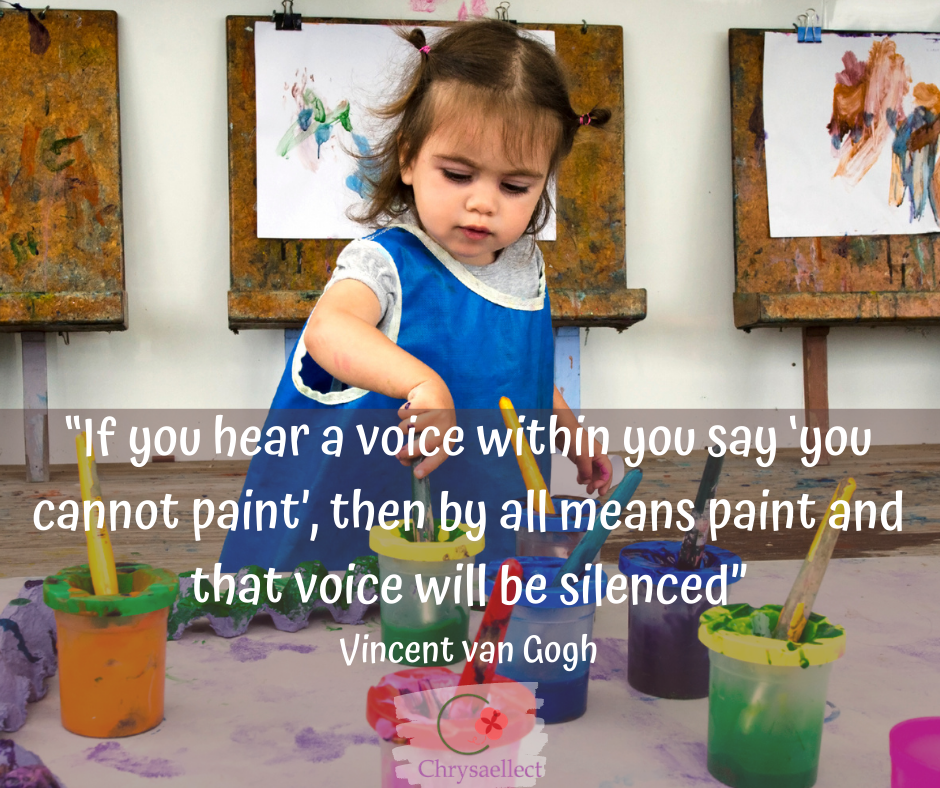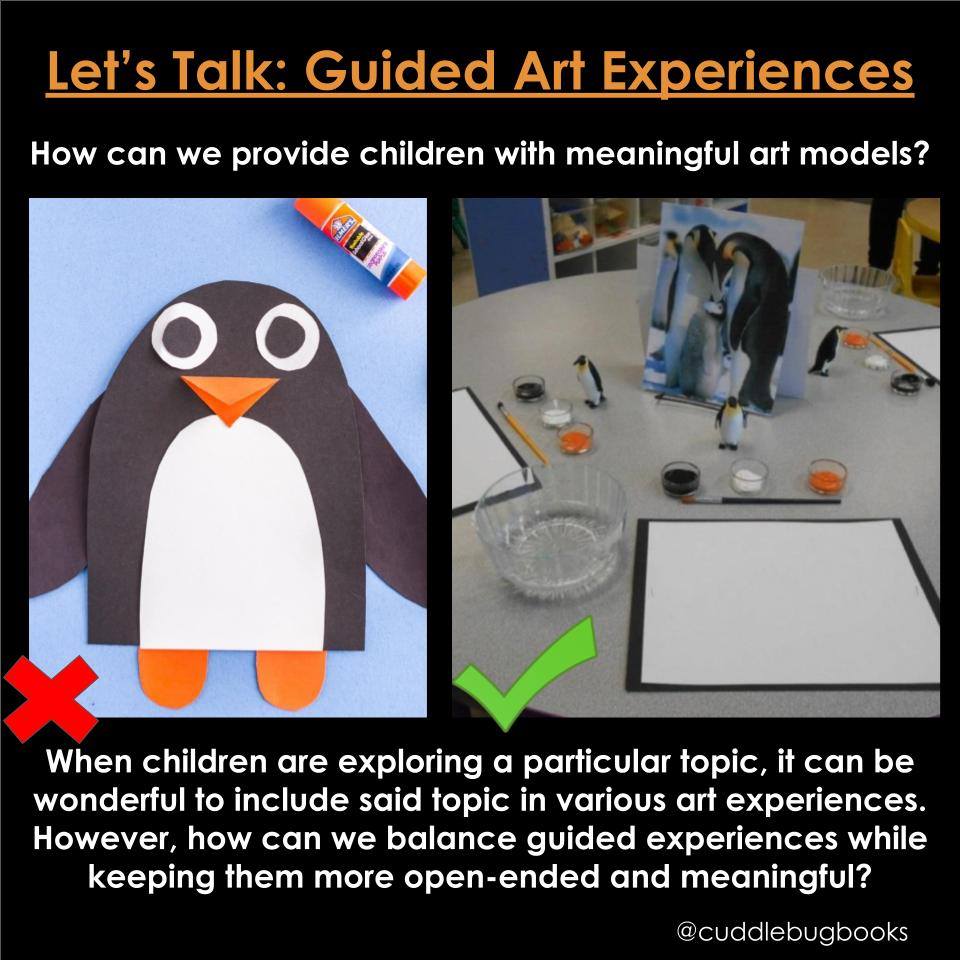- Posted on
- Chrysaellect
- No Comments
Often when discussing the (overwhelming) benefits of process over product experiences, many educators quite often respond with:
- “I think a mix of both is best!”
- “Children benefit from a guide!”
- “I give my children the pieces but let them do whatever they want with them.”
So, let’s address each one…
- “I think a mix of both is best!”
Absolutely! HOWEVER, a meaningful product driven experience needs to be developmentally appropriate and will still focus on and favour the process in order to obtain the product.
Developmentally appropriate means children should be capable of creating said product on their own, meaning a teacher shouldn’t have to do ANY cutting, directing, rearranging, etc. of materials. Expecting a toddler to create a “cow” for “Farm Week” is not developmentally appropriate. In this case, there is a big emphasis on product, and less interest in the process and making this experience most meaningful and developmentally appropriate.
Challenging children to create something concrete, such as a cow is fine when they’ve obtained the skills to do so, independently. They should be provided with open ended materials to attempt this, while teachers should avoid creating distinct pre-cut pieces for the children. Children are the ones that should be welcomed to create the pieces on their own – THAT is the process! THAT is the learning! When we’re doing the work for them, we’re limiting authentic learning.
- “Children benefit from a guide!”
When children are exploring a subject, its super beneficial to include real life images of said topic. This can be really helpful in seeing/understanding the various aspects, details, parts, features, functions, etc. But why do we provide cartoon images or craft images instead? Why do we want them to replicate a craft? Why don’t we give children more respect by displaying the “real thing?”


In the example image below where children are invited to create penguins for their “Polar Animal Investigation,” notice the two “polar” opposite examples; one example is a teacher created craft penguin where pieces are already pre-cut. This experience will probably take less than 5 minutes. There’s hardly any room for creativity – scratch that, there is no room for creativity. However, the second example is a real-life image of penguins, with blank paper and open ended creative utensils – offering an astonishing amount of benefits. In this experience, children can us the image as a guide, but create as they choose. Perhaps they draw inspiration from the penguins features, but makes a super creative and unique penguin of their own. Maybe they are laser focused on the baby and try replicate it. Maybe they want to copy the image in its entirely and have to consider scale, shapes, format, color blending and matching, etc. This experience can go on for as long as the children are welcomed to explore.
- “I give my children the pieces but let them do whatever they want with them.”
Typically when we have an experience where teachers say they let the children glue the pieces on however they want (e.g. the mouth is on top of the head, it has five eyes, etc.), usually means this is a developmentally inappropriate experience. In this instance, we’re welcoming children to create a concrete image, but their focus and interest is mainly on how to utilize glue and the pieces in a successful way. They aren’t in the stage where they can make recognizable images yet, therefore we shouldn’t pretend they are. If they’re learning how to glue things down, let the experience be more open ended. Instead of a few pre-determined pieces (eyes, nose, mouth), offer children various loose parts/craft items (different sizes, textures, shapes, colors, etc.) and just let them glue and draw freely. Give them more materials and more time to keep practicing these skills. This will allow them to explore far longer (and with more interest) which will contribute far more to their fine motor and creative development.
What are your thoughts on providing a guide for children in their art experiences?

